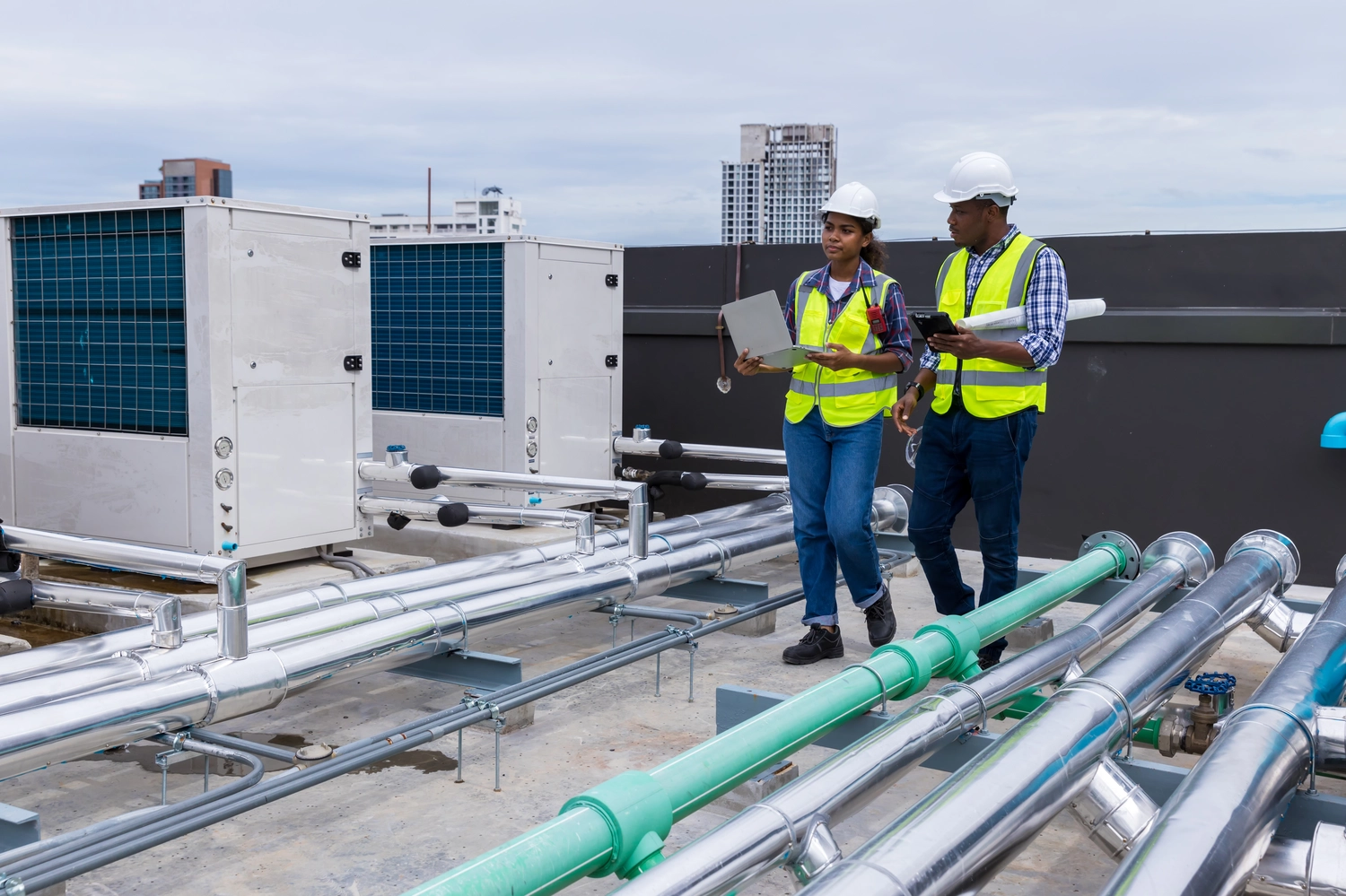Heating, ventilation, and air conditioning (HVAC) systems are critical components of any commercial building, ensuring a comfortable and safe environment for occupants. With the increasing demand for energy efficiency and smarter building management, automated control systems are now widely used to optimize HVAC performance, reduce energy consumption, and improve building operations. These systems enable real-time monitoring and adjustments, ensuring that HVAC systems are always running at peak efficiency. To explore the latest innovations in automated controls, check out The Complete Guide to Automated Controls for Industrial and Commercial Applications.
In this blog, we will delve into how automated control systems are revolutionizing HVAC management in commercial buildings, making them more efficient, cost-effective, and environmentally friendly.
Optimizing HVAC Systems with Automation
One of the most significant advantages of automated control systems is their ability to optimize HVAC performance. In commercial buildings, HVAC systems are often responsible for a large portion of energy consumption, and inefficiencies in these systems can lead to excessive energy waste. Automation enables facility managers to monitor and control HVAC systems in real time, adjusting temperature, airflow, and ventilation based on occupancy and environmental conditions.
For example, Building Management Systems (BMS) can automate temperature adjustments in different zones of a building, ensuring that heating or cooling is only used when needed. By automating HVAC systems, businesses can significantly reduce their energy consumption, lowering operational costs and minimizing their environmental impact.
The Role of IoT in HVAC Automation
The rise of the Internet of Things (IoT) has brought about new opportunities for HVAC automation in commercial buildings. IoT devices, such as smart thermostats and sensors, are connected to HVAC systems, allowing them to collect real-time data on factors like temperature, humidity, and occupancy. This data is then used to make automatic adjustments to the HVAC system, ensuring that the building maintains optimal indoor conditions while minimizing energy use.
For example, smart thermostats can detect when rooms are unoccupied and adjust the temperature accordingly, reducing energy waste. These systems can also provide facility managers with insights into energy usage patterns, helping them identify areas where further efficiency improvements can be made.
For more insights into how IoT and other advanced technologies are shaping the future of automation, refer to Trends and Innovations in Automated Control Systems.
Enhancing Indoor Air Quality with Automated Controls
In addition to optimizing energy efficiency, automated control systems also play a crucial role in improving indoor air quality (IAQ) in commercial buildings. Poor air quality can negatively affect occupant health, leading to reduced productivity and increased absenteeism. Automated HVAC systems can monitor IAQ and adjust ventilation settings to ensure that air quality remains within healthy parameters.
For example, sensors can monitor CO2 levels, humidity, and particulate matter in the air. If air quality drops below a certain threshold, the system can automatically increase ventilation or activate air purifiers to improve IAQ. This ensures that occupants are always breathing clean, fresh air, creating a healthier and more comfortable indoor environment.
Reducing Maintenance Costs with Predictive Maintenance
One of the key benefits of automated control systems in HVAC management is their ability to enable predictive maintenance. By continuously monitoring HVAC system performance, automated systems can detect early signs of wear and tear, alerting facility managers to potential issues before they become serious problems.
For instance, if a sensor detects that a motor is running at an abnormal temperature, the system can send an alert to the maintenance team, allowing them to address the issue before the motor fails. This proactive approach reduces the likelihood of unexpected breakdowns and costly emergency repairs, ensuring that HVAC systems remain operational and efficient.
The Impact of Automation on Energy Savings
Energy savings are one of the most significant benefits of using automated control systems in HVAC management. By optimizing heating, cooling, and ventilation systems, automation reduces unnecessary energy consumption, leading to lower utility bills and a smaller carbon footprint.
According to the U.S. Department of Energy, commercial buildings can save up to 30% on energy costs by implementing smart HVAC controls. Automation ensures that HVAC systems are only using energy when and where it’s needed, preventing energy waste and improving overall building performance.
Improving Comfort and Productivity with Automated HVAC Controls
In addition to energy savings, automated HVAC controls improve occupant comfort and productivity. A comfortable indoor environment is essential for employee productivity, customer satisfaction, and overall building performance. Automated systems ensure that temperature, humidity, and ventilation levels are optimized for comfort, regardless of external weather conditions.
For example, during hot summer months, automated HVAC systems can pre-cool buildings before occupants arrive, ensuring a comfortable temperature without wasting energy. In colder months, automated heating systems can be programmed to maintain a consistent indoor temperature, improving occupant comfort while reducing energy costs.
The Future of HVAC Automation in Commercial Buildings
As technology continues to evolve, the future of HVAC automation in commercial buildings looks promising. The integration of Artificial Intelligence (AI) and Machine Learning (ML) into automated HVAC systems will allow these systems to learn from data, making smarter decisions and further optimizing performance.
In the near future, AI-powered HVAC systems will be able to predict changes in occupancy patterns, adjust settings based on weather forecasts, and provide even greater energy savings. These advancements will not only reduce operational costs but also contribute to a more sustainable and environmentally friendly building management approach.
Maximize Your Building’s Efficiency with TRLINK’s HVAC Automation Solutions
Automated control systems have transformed the way commercial buildings manage their HVAC systems, leading to significant energy savings, improved indoor air quality, and enhanced occupant comfort. By implementing HVAC automation, businesses can reduce their carbon footprint, lower operational costs, and ensure a more comfortable indoor environment.
If you’re looking to optimize your commercial building’s HVAC system with state-of-the-art automation, schedule a consultation with TRLINK today. Our experts will help you implement the latest HVAC automation solutions tailored to your building’s unique needs.


